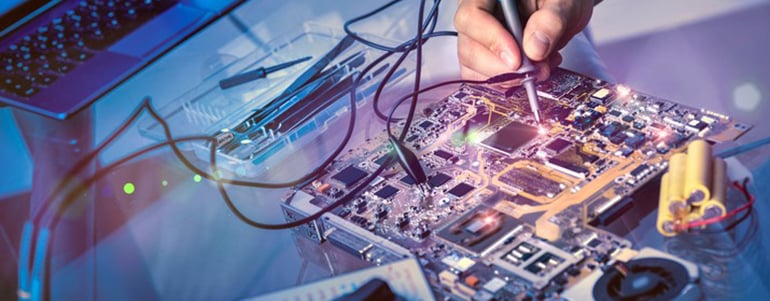Testing and Certification in North America

14 Jan 2020
A Look at OSHA's NRTL Program
In the United States, manufacturers depend on Nationally Recognized Testing Laboratories (NRTLs) to provide safety certification for their products. NRTLs are independent third‐party organizations recognized by the U.S. Occupational Safety and Health Administration (OSHA) to provide evaluation, testing, and certification of electrically operated or gas and oil‐fired products.
OSHA's NRTL regulations were established in 1988. These are a set of criteria allowing labs to illustrate their suitability to be recognized as an NRTL. The first organization to be recognized as a NRTL was done so in 1989. Today, there are 19 companies recognized as NRTLs, meaning manufacturers have a choice when it comes to selecting which third‐party lab best meets their needs.
A NRTL has demonstrated compliance to requirements related to the procedures in place for testing and certifying specific types of products, including capability, control programs, complete independence, and reporting and complaint handling. To be recognized as a NRTL, an organization must maintain the necessary capabilities as a product safety testing laboratory and as a product certification body. NRTLs are thoroughly audited and their recognition is renewed every five years.
An individual NRTL is only recognized for specific products within its scope of recognition. This scope is based on specific safety test standards, testing locations (sites) and supplemental programs that OSHA has recognized. After an initial recognition, a NRTL may seek to expand its scope of recognition by requesting to add additional test standards, for example.
NRTLs must use "appropriate" product safety test standards in certifying products for safety. These test standards contain technical requirements that products must meet for workplace safety. OSHA does not develop these test standards; many of them are published by organizations such as the National Fire Protection Association (NFPA), the Institute of Electrical and Electronics Engineers (IEEE), Underwriters Laboratories (UL), the Canadian Standards Association (CSA), the Association for the Advancement of Medical Instrumentation (AAMI), the International Society of Automation (ISA), the National Electrical Manufacturers Association (NEMA) and Factory Mutual (FM).
Accreditation by OSHA is equal; all participating labs are held to the same requirements, and the testing and certification process is similar across the board. Additionally, all NRTLs meet the same requirements for recognition, so each NRTL recognized for a particular product standard is equivalent in its capability to test and certify to that standard. However, organizations may have different abilities depending on their experience, personnel, facilities and equipment, and other aspects of their operations. Some NRTLs also have multiple recognized facilities, including labs in other countries such as China, Japan, Germany and Mexico.
Each NRTL issues a proprietary certification mark for products found to comply with regulatory requirements. Because the standards for a given product dictate what must be evaluated, as well as the results that will be considered acceptable, no one mark has greater credibility or held to higher standards than another. When you see a certification mark from any of the recognized organizations, you can be confident the product has been tested and determined to meet the necessary OSHA safety requirements.
For more on the NRTL program, including Intertek's history as a recognized lab, see our 30th anniversary article.

Paul Moliski,
Vice President of Accreditation
Paul Moliski is the Vice President of Accreditation for the Electrical Business Line at Intertek, where he manages and develops corporate accreditations. He is currently a Member at Large on the ANSI Board of Directors and represents Intertek on several industry committees including the USNC/IECEE, USNC Council, the International Accreditation Forum and the International Federation of Inspection Agencies (IFIA). He was critical in the development and acceptance of the ETL Certification Program, which grew to become the second-largest certification program of its kind in North America. Paul has since opened certification bodies in Argentina, Brazil, Chile, Colombia and Mexico.